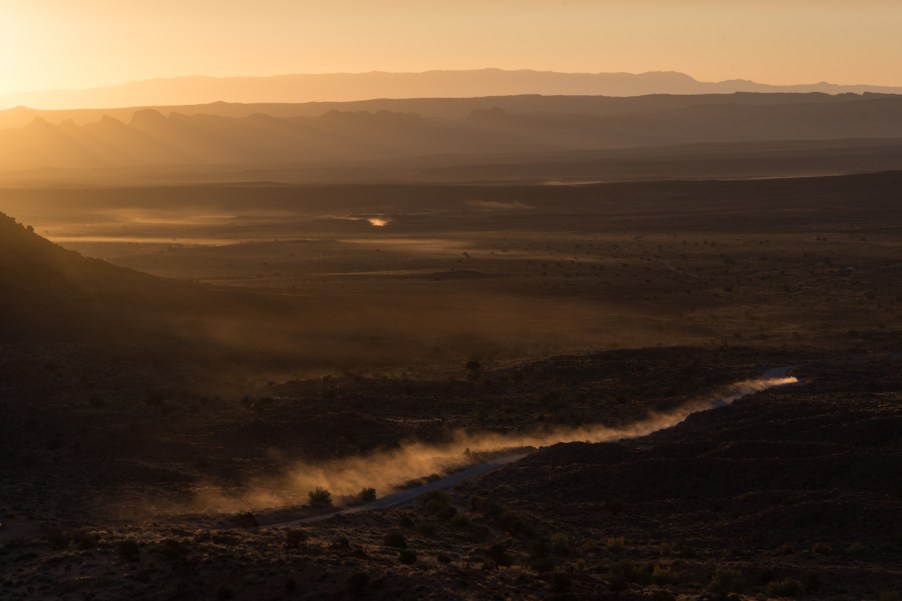
Ernest Hemingway and Jack Kerouac: United By Parallel Road Trips
Many readers consider Jack Kerouac the patron saint of the great American road trip. So it may be surprising to learn writer Ernest Hemingway loved road trips too. Hemingway and Kerouac were born over twenty years apart and led very different lives. Yet, they both wrote a novel that defined their respective generation and became literary celebrities. They both revolutionized American prose. And they both loved to drive. They loved driving so much that after each of them published their first book, they each completed a great American road trip in their beloved Ford.
Ernest Hemingway in 1928
By twenty-eight years old, Ernest Hemingways was the brightest literary star of his generation. Living amongst expatriate writers in Paris, he published several revolutionary short story collections, his prose style forever changing American literature. Then, inspired by his friend F. Scott Fitzgerald’s “The Great Gatsby,” he wrote a novel.
Hemingway’s debut, “The Sun Also Rises,” is about a posse of young expatriates behaving badly at the bullfights in Spain. But, unlike “Gatsby,” “Also Rises” explores exactly why the 1920s roared. In the book, Hemingway names his fellow disillusioned veterans the Lost Generation.
Hemingway enjoyed taking trips by train from Paris to Austria and Spain. But while a starving artist in Europe, he could not afford a car.
But in 1928, Hemingway returned to the United States, triumphant. Ernest Hemingway’s wealthy uncle-in-law, Gus Pfeiffer, bought Hemingway a car. He ordered the Hemingway’s a brand-new Ford Coupe, loaded with all the available options.
Hemingway and his wife, Pauline Pfeiffer, landed in Key West, Florida to take delivery of the car. The Hemingways fell in love with the town and would live there until 1938.
Ernest Hemingway’s First Road Trip

That spring, the Hemingways road tripped up Florida and then drove their brand-new Ford west. Pauline was very pregnant, so the couple stopped their road trip in Arkansas to see the Pfeiffer clan. Then they continued to a hospital in Kansas City, where Pauline gave birth.
Hemingway left Pauline and his new son, Patrick, in Pickett to rest and continued driving the new Ford westward on his own. He became hooked on road-tripping. During the day, the landscape of the country captivated him. And in hotel rooms at night, he worked on what would be his most celebrated novel: a love story set during World War One titled “A Farewell To Arms.”
In 1928, Hemingway was drawn to the Rocky Mountains, as he would be for the rest of his life. He spent the fall hunting and fishing in the western wilderness. Pauline came west to join him. The Hemingways loved their transcontinental road trip so much that they continued it as a yearly tradition.
Jack Kerouac in 1950
At twenty-eight years old, Jack Kerouac feared he was a literary failure. His first novel, “The Country and The City,” had been a commercial and critical flop. He aspired to write “a great road novel” but did not know how to begin or end it.
Kerouac knew his novel would center around his wild friend Neal Cassady. Kerouac had already hitch-hiked across the country to meet up with Cassady and later road-tripped across the country as Cassady’s co-driver. But as he poured over his pocket notebooks, he couldn’t help feel that the story was incomplete.
Kerouac attempted to move his family to his beloved Rocky Mountains with the bit of money he made from his first book. He rented a house in Denver, Colorado and paid to move his widowed mother, sister, and brother-in-law out from the East Coast. They decided they did not like Denver and returned east. Broke and broken-hearted, Kerouac ambled about Denver. Then Neal Cassady arrived.
Jack Kerouac and Neal Cassady’s Final Road Trip

Kerouac and Neal Cassady had talked about a Mexican road trip for years. Then in 1950, Cassady decided the time had come. So in New York, Cassady bought (or stole) an ancient Ford and drove to Denver. Kerouac described the car as a “sedan with the right-side door unhinged and tied on the frame. The right-side front seat was also broken, and you sat there leaning back, face to the tattered roof.” (Kerouac, 217).
Reunited, the two friends partied in Denver for a night. Then, beginning where Hemingway’s 1928 road trip had ended, Kerouac and Cassady drove their Ford straight south.
Kerouac and Cassady’s road trip became legend: they slept in bug-infested jungles and partied all the way to Mexico City. Finally, Kerouac famously realized that his beloved road continues beyond America and circles the world. But when Kerouac fell sick, Cassady abandoned him in Mexico City and drove north.
Cassady’s ancient Ford blew a differential just over the U.S. border and hitch-hiked home. While Kerouac convalesced in Mexico City, he had time to reflect on Cassady’s true nature and, as importantly, how his road novel should end. When Kerouac finally published “On The Road,” the book introduced the Beat Generation to the public and launched its writer into stardom.
Sources: Arkansas.com and The New York Times



